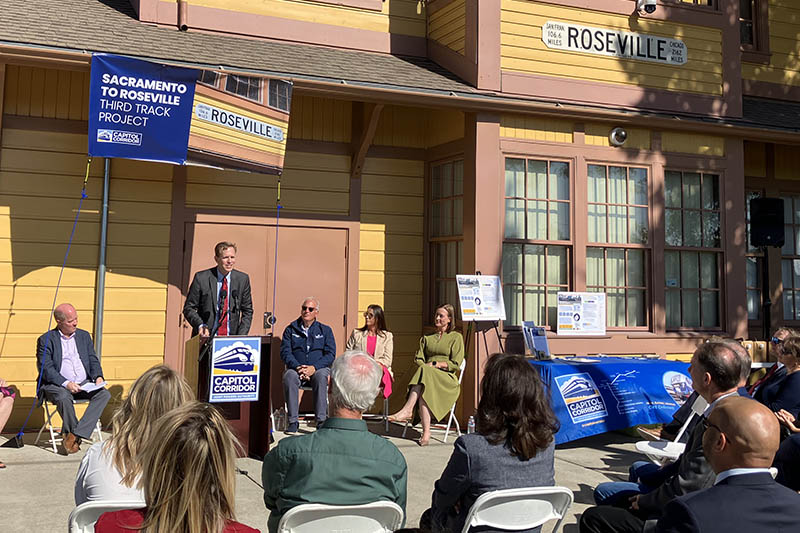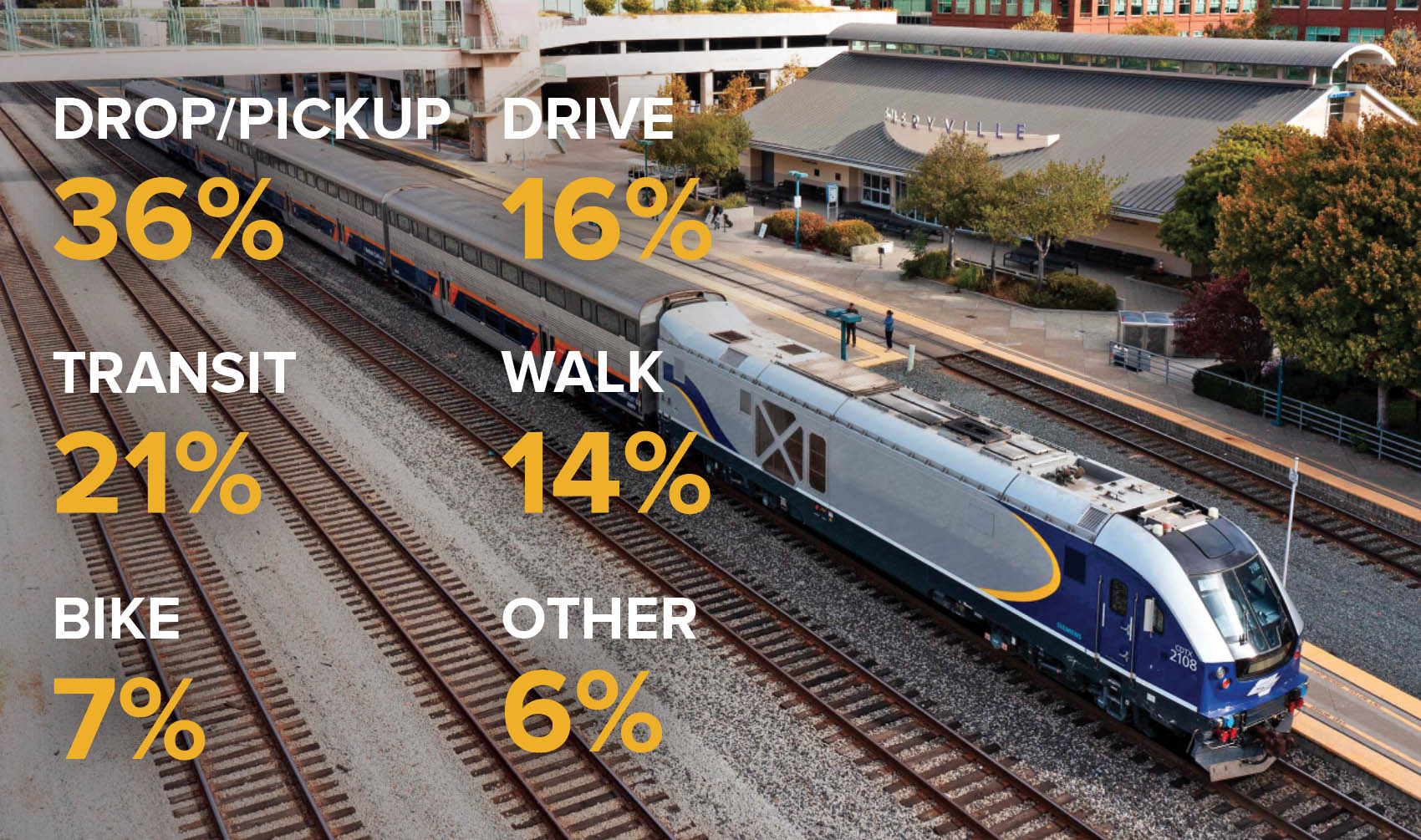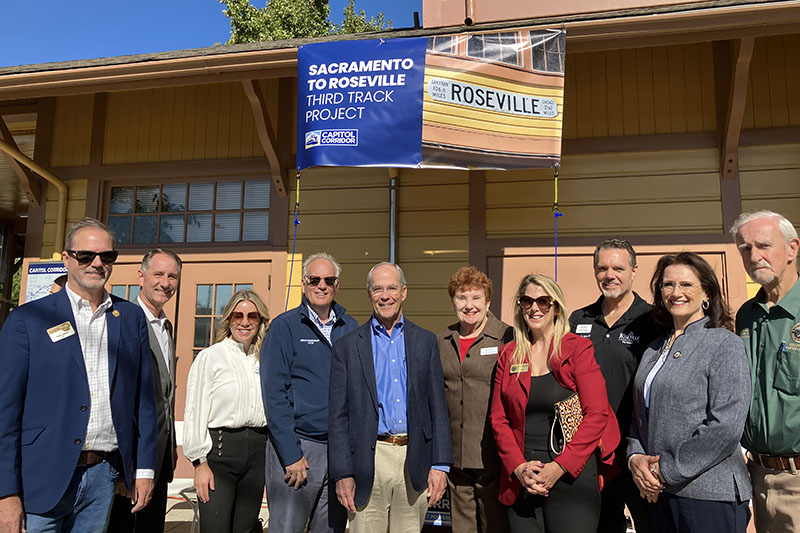Welcome Aboard
FY2023 in many ways, was a come-back year for Capitol Corridor Joint Powers Authority (CCJPA), demonstrated by steady growth in both ridership and revenue. We carried over 921,000 passengers, resulting in revenue of $23 million—a 30 percent increase from the previous year. As we navigated a post-pandemic landscape, the influx of new riders discovering the ease and convenience of rail travel, coupled with returning passengers, offered encouragement and showcased a positive trajectory.
 In major project news, we secured a significant $42.51 million Consolidated Rail Infrastructure and Safety Improvements (CRISI) Grant Award from the Federal Railroad Administration (FRA) to complete Phase 1 of the Sacramento to Roseville Third Track project. This grant represents the first federal investment in our service since 2009 and the first expansion of it since 2006. Upon its completion in 2029, we anticipate the ability to run two additional roundtrips between Sacramento and Roseville.
In major project news, we secured a significant $42.51 million Consolidated Rail Infrastructure and Safety Improvements (CRISI) Grant Award from the Federal Railroad Administration (FRA) to complete Phase 1 of the Sacramento to Roseville Third Track project. This grant represents the first federal investment in our service since 2009 and the first expansion of it since 2006. Upon its completion in 2029, we anticipate the ability to run two additional roundtrips between Sacramento and Roseville.


















 Event trains to Levi’s Stadium took center stage in FY2023 and exceeded ridership expectations, with over 9,500 passengers traveling to concerts and San Francisco 49er games throughout the football season and concert series. These highly publicized events garnered substantial media attention, which raised awareness of Capitol Corridor service and the convenience of train travel to/from these events. The success of these special trains was heightened by an aggressive marketing communications plan. This comprehensive strategy included media interviews, videos, onboard promotions, press releases, blogs, and social media campaigns. Collectively, these efforts contributed significantly to the overall success of the events.
Event trains to Levi’s Stadium took center stage in FY2023 and exceeded ridership expectations, with over 9,500 passengers traveling to concerts and San Francisco 49er games throughout the football season and concert series. These highly publicized events garnered substantial media attention, which raised awareness of Capitol Corridor service and the convenience of train travel to/from these events. The success of these special trains was heightened by an aggressive marketing communications plan. This comprehensive strategy included media interviews, videos, onboard promotions, press releases, blogs, and social media campaigns. Collectively, these efforts contributed significantly to the overall success of the events. Café Car Specials
Café Car Specials






